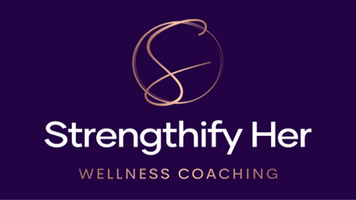
Hey Friend! Ever hesitated before picking up a heavy grocery bag because you worried you’d end up sore or shaky? Or finished your favorite workout feeling more drained than energized? If you’re navigating perimenopause or menopause, shifting hormones can make everyday tasks and exercise feel tougher than they should. Here’s the kicker: those very hormonal changes open a prime window for resistance training. With the right strength work, you can rebuild lean muscle, spark your metabolism, balance your hormones—and boost your confidence and resilience.
But before we dive into the “why,” let’s tackle the elephant in the room: the myths and misconceptions that hold so many women back. You might think strength training means bulging muscles, bulky physiques, or risking injury. I get it—if you’ve never lifted weights, the idea can feel intimidating. But strength isn’t about lifting the heaviest barbell; it’s about feeling capable, independent, and ready for anything life throws your way.
Imagine skipping up the stairs without knee pain, carrying your grandkids without wincing, springing out of bed with energy and ease, or being able to burn calories while even at rest! That’s the power of building muscle in midlife—it keeps you active, healthy resilient, and injury-free as you age. Let’s Strengthify your awesomeness and stop letting these barriers steal your time and vitality.
Now—what’s the #1 thing keeping you from picking up those weights? Summarized below are some of the main reasons why you may be avoiding lifting weights. Which one (or several) of the barriers below can you relate to?

Lies, Stereotypes & Other Barriers Women Face in Strength Training
Fear of “Bulking Up” or Looking “Too Muscular”
Many women worry about losing femininity, that lifting will make you look too muscular or masculine, rather than toned and strong. Though building excessive muscle is difficult without specific training and nutrition.
Intimidating Gym Environment
The gym environment, particularly the weightlifting section, can feel unwelcoming or intimidating for women. Often leaving them to feel out of place among experienced lifters, heavy machinery, or crowded weight areas.
Lack of Knowledge or Confidence
Not knowing proper form, programming, or where to start—so you avoid it altogether.
Fear of Injury or Aggravating Aches
Concern that strength work will worsen joint pain, back issues, or existing niggles.
Time Constraints
Many women juggle family, careers, and caregiving responsibilities, making it hard to prioritize fitness.
Unawareness of Strength Training’s Importance
Not knowing that building muscle is crucial for bone health, metabolism, hormonal balance and long-term functional independence—so it never even makes the priority list.
Belief That Cardio Is Enough
Assuming walking, running, or classes alone deliver all the health and fitness benefits you need. Some women have been conditioned to believe that cardio is for women, while weights are for men.
Discomfort or Embarrassment
Feeling self-conscious about using machines, free weights, or being watched.
Lack of Representation, Societal Stereotypes & Misconceptions
Media often showcases younger women in fitness, leading to a belief that lifting weights isn’t for women of any age and particularly ages 40+. In addition, many still hear some of the old-school rhetoric—that strength training is “not for women” or only for athletes/bodybuilders.
Cost or Access Issues
Limited access to a gym, equipment, or affordable classes can be a real roadblock.
Lack of Motivation or a Sustainable Plan
Without clear goals, programming, or accountability, it’s easy to skip strength workouts and stick to routines you already know.
Misconceptions About Safety – Fear of injury or believing that weight training is too intense or risky for older women.
Now that we’ve unpacked the top reasons holding you back, it’s time for a little “Strength Shift.” Let’s flip the script on those myths and barriers and explore why midlife is actually the ideal moment to embrace resistance training. By understanding how building muscle fuels your metabolism, supports bone health, balances hormones, and boosts confidence, you’ll see that the payoff far outweighs any initial hesitation. Ready to shift your perspective? Let’s dive in.
Why Strength Training Is Essential for Women at Midlife
Reverse or Prevent Accelerated Muscle Loss
After age 40, women can lose anywhere from 3–5% of their muscle mass per decade—and those muscle losses (which is called sarcopenia) often accelerate during menopause. By prioritizing resistance training today, you not only prevent further decline but also spark new muscle growth. More muscle translates to:
- A higher resting metabolic rate, burning extra calories faster—and even at rest

- Improved insulin sensitivity, which stabilizes blood sugar
- Greater functional strength, making everyday tasks feel easier and safer
Boost Bone Density & Reduce Fracture Risk
Declining estrogen levels can lead to bone loss, increasing the risk of osteoporosis and fractures. Weight-bearing and resistance exercises apply the right kind of stress to your bones, signaling them to rebuild and strengthen. Research shows consistent lifting can raise bone mineral density by up to 2% per year—an essential defense for long-term skeletal health.
Enhance Mood & Cognitive Clarity
Strength training is a potent mood- and mind-enhancer. Every session releases endorphins and raises levels of brain-derived neurotrophic factor (BDNF), a protein that supports learning and memory. Especially when brain fog, irritability, or restless nights creep in, a simple twice-weekly resistance routine can:
- Sharpen your focus and mental stamina
- Ease anxiety and stress
- Promote deeper, more restorative sleep
Counter Metabolic Slowdowns
Hormonal fluctuations often slow metabolism, leading to stubborn weight gain—especially around the midsection. Unlike steady-state cardio, resistance training reshapes your body composition. Even small increases in muscle mass can boost your daily calorie burn by 100–200 calories, turning your body into a more efficient fat-burning machine. It also supports hormonal balance, helping to ease hot flashes, mood swings, and sleep disturbances.
Elevate Confidence & Self-Esteem
Strength training does more than sculpt your muscles; it reshapes how you see yourself. Each milestone—whether it’s adding an extra rep, lifting a heavier weight, or mastering proper form—serves as a powerful reminder of your resilience and capability. This growing sense of accomplishment boosts self-esteem, helps combat negative self-talk, and leaves you standing taller—inside and out.
Getting Started: Small Steps, Big Impact
- Aim for 2–3 weekly sessions of compound lifts: squats, push‑ups, deadlifts, and rows.
- Focus on gradual progression: increase weight, reps, or sets each week.
- Prioritize protein: include a palm‑sized portion at each meal to support muscle repair and hormone balance.
- Rest & recover: aim for 7–8 hours of sleep and consider gentle stretching or foam rolling on off‑days.
Midlife strength training isn’t just about building muscle—it’s a powerful strategy to boost metabolism, balance hormones, enhance mood, and elevate your confidence. Consistent resistance work during perimenopause and menopause can transform your health and empower you to feel strong inside and out.
Ready to Embrace Your Strength Shift?
Whether you’re just beginning or looking to elevate your current routine, I’m here to guide you. Reply to this email to schedule a complimentary Strength Strategy Session or a discovery call, and let’s craft a personalized plan that fits your goals, your schedule, and your unique hormonal journey.
To your renewed strength and vitality,
Judithe
Certified Hormone Health & Fitness Coach
Strengthify Her Wellness Coaching


Comments